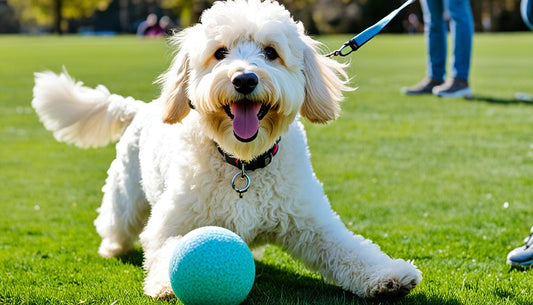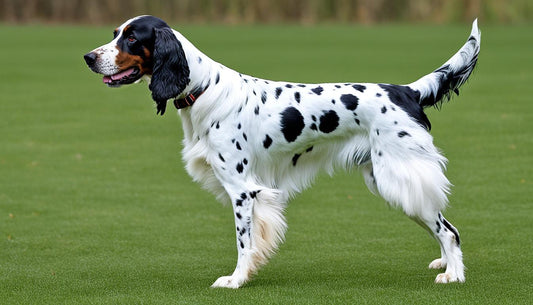Your ultimate Pocket Bully guide for 2024! Whether you're a seasoned Pocket Bully owner or thinking about adding a Pocket Bully to your family, this guide has everything you need. Dive into the specifics of owning a Pocket Bully, from their unique physical characteristics to their loving temperament, health care, and daily needs.
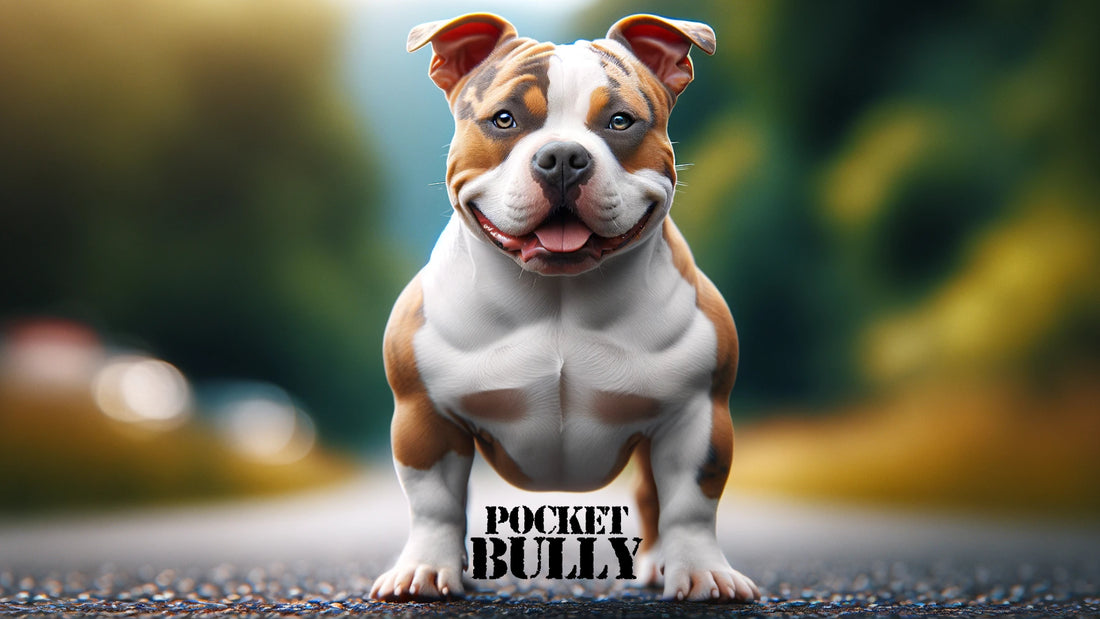
Pocket Bully - Dog Breed Information, Puppies & Expert Tips
Comprehensive Guide to Pocket Bully Dogs

Published on 03/07/2024, 11:19 PM MST
Last Updated on 03/07/2024, 11:19 PM MST
Key Takeaways: Essential Insights on Pocket Bully Ownership

| Key Insight | Takeaway |
|---|---|
| Compact and Muscular Build | Pocket Bullies stand out with their compact size and muscular physique, suitable for various living conditions. |
| Lifespan and Health | With a lifespan of 10-12 years, proactive health management is crucial to address common issues like hip dysplasia and allergies. |
| Family-Friendly Nature | They are known for their affectionate temperament, making them excellent companions for families, including those with children. |
| Exercise Requirements | Pocket Bullies require moderate exercise (30-60 minutes daily) to maintain their health and happiness. |
| Adaptability to Living Spaces | Their adaptable nature makes them well-suited for both apartments and houses, provided they get enough physical activity. |
| Grooming Needs | They have minimal grooming needs, requiring only regular brushing and occasional baths. |
| Training and Socialization | Pocket Bullies are intelligent and trainable, thriving on positive reinforcement and consistent socialization. |
| Diet and Nutrition | A high-quality diet tailored to their age, size, and activity level is essential for their overall well-being. |
| Social Characteristics | Highly social and interactive, they require regular human interaction to stay happy and engaged. |
| Financial Commitment | Prospective owners should consider the financial and time commitment required for care, including potential healthcare costs. |
- Introduction to Pocket Bully Dogs
- Origins of the Pocket Bully Breed
- Physical Characteristics of Pocket Bully Dogs
- Pocket Bully Temperament and Personality
- Training and Exercising Your Pocket Bully
- Health and Care for Your Pocket Bully
- Grooming and Daily Care for Pocket Bully Dogs
- Pocket Bullies in Family Settings
- Differences Between Male and Female Pocket Bullies
- Choosing a Pocket Bully Puppy: A Buyer's Guide
- Pocket Bully: Unique Traits and Special Features
- Weighing the Pros and Cons of Pocket Bully Ownership
- Cost Analysis: Owning a Pocket Bully
- The Enduring Appeal of Pocket Bullies
- FAQs: Everything You Need to Know About Pocket Bullies
Introduction to Pocket Bully Dogs

Overview: Dive into the World of Pocket Bully Dogs
Welcome to the vibrant world of Pocket Bully dogs – the compact companions that are taking the canine community by storm! These pint-sized powerhouses pack all the muscular build and friendly demeanor of their larger American Bully counterparts into a smaller, more manageable package. What's not to love? Their unique appeal lies not just in their size but also in their robust build, making them the perfect pet for those looking for a muscular buddy in a smaller form factor.
But it's not just about looks; Pocket Bullies are known for their sweet temperament, melding seamlessly into family life. They're affectionate, loyal, and surprisingly adaptable, making them an excellent choice for both apartment dwellers and those with more spacious homes. Their rising popularity is no mystery – these dogs offer the best of both worlds, combining the imposing looks of a bully breed with a size that fits into various lifestyles.
Key Aspects of Pocket Bully Dogs
Introduction to the Breed's Compact Size
First off, let's talk size. The "Pocket" in Pocket Bully refers to their more compact stature. These dogs are designed to be smaller than the standard American Bully, but what they lack in size, they more than make up for in personality! They're robust, muscular, and agile, able to participate in many of the same activities as their larger cousins.
Characteristics: Appearance, Temperament, Compatibility with Families
In terms of appearance, Pocket Bullies boast a broad chest, a short back, and a head that's large and square. But it's their temperament that truly wins hearts. These dogs are friendly, outgoing, and surprisingly gentle, making them fantastic companions for children. They thrive on human interaction and fit beautifully into family settings, showing a remarkable ability to adapt to their owner's lifestyle.
Rising Popularity in the Canine Community
The surge in popularity of Pocket Bullies is a testament to their versatility and appeal as pets. They've become a favorite among dog enthusiasts who appreciate the Bully breeds but are looking for something a bit more compact. Their adaptability and friendly nature have catapulted them into the spotlight, making them one of the most sought-after breeds for families and singles alike.
Table: Key Traits Overview of Pocket Bully Dogs
| Trait | Description |
|---|---|
| Size | Compact, muscular build with a height of 13 to 17 inches at the shoulder. |
| Temperament | Affectionate, loyal, and adaptable with a strong desire for human companionship. |
| Family-Friendliness | Excellent; known for their gentle nature and compatibility with children and other pets. |
Tips: How to Ensure a Pocket Bully Fits into Your Lifestyle
Choosing a Pocket Bully as your furry companion is a decision that comes with responsibility. These dogs require regular exercise, mental stimulation, and, most importantly, your time and affection. To ensure a Pocket Bully fits perfectly into your lifestyle, consider your living situation, activity level, and the time you can dedicate to training, socialization, and care. With the right approach, a Pocket Bully can become an irreplaceable part of your life, bringing joy, laughter, and a lot of love into your home. 🐾
Origins of the Pocket Bully Breed

Background: Explore the History and Development of the Pocket Bully
The story of the Pocket Bully begins with its predecessor, the American Bully. Originating in the United States in the late 20th century, the American Bully was developed by blending the desirable traits of the American Pit Bull Terrier and the American Staffordshire Terrier. Breeders aimed to create a dog with the strength, stamina, and fearless nature of a bulldog, combined with the gentle, affectionate temperament of a companion dog.
Enter the Pocket Bully – a breed designed to embody all the physical and temperamental traits of the American Bully in a more compact frame. This evolution wasn't by accident but a deliberate effort by breeders to cater to enthusiasts looking for a Bully breed that fits into a smaller living space without sacrificing the breed's distinctive qualities. The result? A muscular, confident, yet incredibly loving breed that’s stealing hearts worldwide.
Highlights of Pocket Bully Development
The American Bully's Heritage
The American Bully's heritage is rich with a lineage of strength, intelligence, and loyalty. It's from this lineage that the Pocket Bully inherits its remarkable traits. Breeders meticulously selected for size without compromising on the breed's health or temperament, leading to the emergence of a dog that embodies the spirit of the American Bully in a package that's accessible to more people and living situations.
Reasons Behind the Breeding of Smaller, "Pocket-Sized" Bullies
The motivation behind breeding smaller Bullies was twofold: to offer a Bully breed variant that fits more easily into various lifestyles and housing situations and to appeal to those desiring a dog with the Bully breed's aesthetic and personality traits but in a more manageable size. The "Pocket" designation refers not to the dog being small enough to fit in a pocket but to its smaller stature compared to the standard American Bully.
Key Milestones in the Breed's Development
The development of the Pocket Bully has been marked by several key milestones. Recognized by the American Bully Kennel Club (ABKC), the breed has seen a rapid increase in popularity and acceptance. Through careful selection and breeding practices, the Pocket Bully has achieved a consistent set of characteristics, making it a distinct and recognizable breed in its own right.
Lineage Table: Breed Evolution Details
| Milestone Year | Event Description |
|---|---|
| Late 20th Century | Origin of the American Bully from American Pit Bull Terrier and American Staffordshire Terrier. |
| Early 21st Century | Introduction and refinement of the Pocket Bully variant. |
| Present Day | Recognition and popularization of the Pocket Bully as a distinct breed. |
Advice: Recognizing Authentic Pocket Bully Characteristics
To recognize an authentic Pocket Bully, look for a dog that embodies the breed's signature physical and temperamental traits but in a smaller frame. A true Pocket Bully will have a compact, muscular build, a friendly and confident demeanor, and a height that does not exceed 17 inches at the shoulder for males and slightly less for females. Understanding these characteristics is crucial for anyone considering adding a Pocket Bully to their family, ensuring they get a dog that’s not just beautiful but also a perfect fit for their lifestyle and home. 🏡
Physical Characteristics of Pocket Bully Dogs

Description: Detailed Exploration of the Breed's Physical Appearance
Let's dive into the distinctive look that sets Pocket Bully dogs apart from their larger counterparts and other breeds. With their muscular frame, striking features, and powerful stance, these dogs make a statement wherever they go. But it's not just about muscle; the Pocket Bully's physical characteristics are carefully balanced with a compact size that makes them both manageable and adaptable to various living environments.
The breed boasts a variety of coat colors and patterns, from classic blacks and blues to more unique and eye-catching combinations. Their coats are short, sleek, and easy to maintain, making them an excellent choice for families or individuals who want a low-maintenance pet with a show-stopping appearance.
Focus Points on Pocket Bully Physical Traits
Coat Colors, Patterns, and Maintenance
Pocket Bullies come in an array of stunning colors and patterns. Whether you're drawn to a solid, classic color or a more distinct pattern like brindle or piebald, there's a Pocket Bully to match every preference. Their coats are not only beautiful but also practical; a simple routine of regular brushing and the occasional bath keeps them looking their best.
Size Standards and Why "Pocket" Size
The term "pocket" refers to the breed's size, which is notably smaller than the Standard American Bully. Males typically stand about 14 to 17 inches tall at the shoulder, while females are slightly shorter. This size makes them an ideal fit for those with limited space or for anyone who prefers a more compact, easier-to-manage dog that still retains the bold, muscular build of the Bully breeds.
Distinguishing Physical Traits
What truly distinguishes Pocket Bullies are their physical proportions. They exhibit a wide chest, a short back, and a head that is large and imposing. Despite their smaller stature, they possess a remarkable muscle mass, giving them a powerful, athletic appearance. Their ears are typically cropped to enhance their alert, attentive look, although this is a personal choice for the owner.
Comparison Table: Physical Traits Across Bully Breeds
| Trait | Pocket Bully | Standard Bully | XL Bully |
|---|---|---|---|
| Height | 14-17 inches | 17-20 inches | 20+ inches |
| Weight | Proportionate to height, muscular build | Larger, muscular build | Largest, with significant muscle mass |
| Coat | Short, sleek | Short, sleek | Short, sleek |
| Colors & Patterns | Wide variety | Wide variety | Wide variety |
| Temperament | Friendly, adaptable | Friendly, confident | Friendly, confident |
Guidance: Identifying a True Pocket Bully
Identifying a true Pocket Bully involves looking for a dog that matches the breed's specific size and physical characteristic standards. Prospective owners should seek out reputable breeders who can provide detailed information about the puppy's lineage, ensuring that the dog is a genuine Pocket Bully. Attention to detail in the breed's unique proportions, coat type, and overall appearance will help you select a healthy, well-bred Pocket Bully that will be a joyful addition to your family for years to come. 🐶💕
Pocket Bully Temperament and Personality

Beyond their striking physical appearance, Pocket Bullies are cherished for their amazing temperament and personality. These dogs are a bundle of joy, showcasing a blend of loyalty, affection, and intelligence that makes them not just pets, but true members of the family. Their friendly demeanor is complemented by an adaptable nature, allowing them to thrive in various settings, from bustling city apartments to spacious country homes.
Pocket Bullies are renowned for their ability to form strong bonds with their owners, displaying an unwavering loyalty that is both heartwarming and protective. Despite their tough exterior, they possess a gentle and loving heart, making them excellent companions for children. Their sociability extends to other pets as well, making them a great addition to homes with multiple animals.
Key Traits of Pocket Bully Personality
Friendly Demeanor and Adaptability
These dogs are the epitome of friendliness, greeting both familiar faces and new acquaintances with enthusiasm and love. Their adaptability is remarkable, enabling them to adjust to different lifestyles and routines with ease. Whether you lead an active lifestyle or prefer quiet evenings at home, your Pocket Bully will be right by your side, content and happy.
Intelligence and Trainability
Don't let their muscular appearance fool you; Pocket Bullies are incredibly smart. This intelligence makes them highly trainable, capable of learning a wide array of commands and tricks. Their eagerness to please combined with their cognitive abilities makes training not just successful but also an enjoyable bonding experience for both dog and owner.
Compatibility with Children and Other Pets
One of the most heartwarming traits of the Pocket Bully is their natural affinity for children. They show a remarkable patience and gentleness around kids, making them excellent family pets. Additionally, their friendly nature usually extends to other pets in the household, fostering a harmonious living environment for everyone.
Behavior Table: Temperament Overview
| Trait | Description |
|---|---|
| Loyalty | Exceptionally devoted and protective of their family. |
| Affection | Highly affectionate, loves cuddling and close contact. |
| Adaptability | Easily adjusts to different living situations and routines. |
| Intelligence | Quick learners, responsive to training. |
| Sociability | Friendly towards humans and other animals. |
| Patience | Shows remarkable patience, especially with children. |
Raising Tips: Fostering a Well-Rounded Personality
Raising a Pocket Bully to be a well-rounded and well-behaved companion involves more than just basic training; it requires consistent socialization, mental stimulation, and lots of love. Expose them to different people, pets, and environments early on to enhance their sociability. Engage their minds with interactive toys and training challenges to keep them sharp and entertained. Above all, provide them with plenty of affection and reassurance to strengthen your bond and ensure they feel like a valued member of the family.
Pocket Bullies are not just dogs; they're a lifestyle. Their combination of muscle, brains, and heart makes them an unbeatable companion for the right owner. If you're looking for a pet that will bring laughter, loyalty, and love into your home, the Pocket Bully might just be the perfect match for you. 🐾💖
Training and Exercising Your Pocket Bully

Training Guide: The Critical Role of Physical Activity and Mental Stimulation
Training and exercising your Pocket Bully are not just about keeping them physically fit; it's about engaging their minds, strengthening your bond, and ensuring they lead a balanced, happy life. These dogs are bundles of energy and intelligence, and they thrive on activity and challenges. Incorporating a mix of physical exercise and mental stimulation into their routine is key to managing their energy levels and nurturing their eager-to-please nature.
An effective training regimen for a Pocket Bully takes advantage of their intelligence and desire to learn. Positive reinforcement techniques, such as treats and praise, work wonders in motivating them and reinforcing good behavior. Consistency and patience are your best tools, helping your dog understand what you expect from them and building a foundation of trust and respect.
Essentials of Pocket Bully Training
Effective Training Methods for Small Breeds
Even though Pocket Bullies are muscular and robust, their smaller size means they can be sensitive to harsh training methods. Focus on positive reinforcement, rewarding good behavior rather than punishing mistakes. This approach not only yields better results but also strengthens your relationship with your dog.
Recommended Exercises and Activities
Pocket Bullies benefit from a variety of physical activities, from brisk walks and play sessions in the park to more structured activities like agility courses. These exercises help keep their muscles strong and their minds engaged, preventing boredom and related behavioral issues.
Tips for Keeping Their Mind Engaged
Mental stimulation is as important as physical exercise. Puzzle toys, training new tricks, and interactive games like hide-and-seek can keep your Pocket Bully mentally sharp and entertained. These activities also tap into their natural problem-solving skills and desire to interact with their owners.
Activity Plan: Sample Weekly Routine
| Day | Activity |
|---|---|
| Monday | Morning walk + puzzle toy |
| Tuesday | Agility training or playdate |
| Wednesday | Rest day with interactive toys |
| Thursday | Training session (new trick) + short walk |
| Friday | Fetch in the park |
| Saturday | Hike or extended outdoor adventure |
| Sunday | Family day, including play and relaxation |
Activity Ideas: Engaging Exercises for Small Spaces
Living in a smaller space doesn't mean your Pocket Bully can't get enough exercise. Indoor activities like tug-of-war, short fetch sessions, and hide-and-seek with treats can keep them active and happy. Even short, frequent walks can significantly contribute to their well-being, providing both physical exercise and mental stimulation through new smells and sights.
Training and exercising your Pocket Bully is about more than just physical health; it's about providing them with a fulfilling life full of love, learning, and exploration. By dedicating time and effort to their training and exercise regimen, you're ensuring your Pocket Bully grows into a well-mannered, happy companion who's as mentally fit as they are physically. 💪🐾
Health and Care for Your Pocket Bully

Health Overview: Addressing Common Health Issues and Promoting Longevity
Caring for a Pocket Bully encompasses a range of practices designed to maintain their health, happiness, and overall well-being. These robust dogs may look tough on the outside, but like any breed, they have specific health considerations that owners should be mindful of. Preventative care plays a crucial role in ensuring your Pocket Bully enjoys a long, vibrant life. Regular vet check-ups, vaccinations, and parasite control are foundational aspects of their health care regime.
Understanding the breed's specific health concerns can also guide owners in providing the best care possible. Pocket Bullies, due to their unique physical build, can be prone to certain conditions such as joint issues, skin allergies, and heart problems. Early detection and treatment of these issues can significantly impact their quality of life.
Key Points in Pocket Bully Health Care
Breed-Specific Health Concerns
Common health issues in Pocket Bullies include hip dysplasia, a condition affecting the hip joint, and brachycephalic respiratory syndrome, although less common than in other short-faced breeds. They can also be susceptible to skin allergies, requiring regular monitoring and care to prevent discomfort and infections.
Factors Influencing Lifespan
The lifespan of a Pocket Bully can be influenced by genetics, diet, exercise, and the overall care they receive. A balanced diet, regular exercise, and prompt medical attention to any health concerns can all contribute to a longer, healthier life for your Pocket Bully.
Preventative Care Practices
Preventative care for Pocket Bullies includes regular vaccinations, flea and tick prevention, dental care, and routine health screenings. These practices are essential in preventing common diseases and identifying any health issues early on, ensuring your Pocket Bully remains healthy and happy.
Health Table: Care Checklist and Health Tips
| Care Aspect | Tips and Best Practices |
|---|---|
| Vaccinations | Keep up to date with routine vaccinations. |
| Parasite Control | Regular flea and tick prevention. |
| Diet | Balanced, high-quality diet tailored to their needs. |
| Exercise | Daily exercise to maintain a healthy weight and muscle tone. |
| Dental Care | Regular dental check-ups and cleaning. |
| Health Screenings | Annual vet visits for overall health assessment. |
Care Tips: Early Detection Strategies for Common Issues
Being proactive in your Pocket Bully's health care involves being vigilant for signs of common health issues. Regularly check their skin for any signs of allergies or infections, monitor their breathing for any difficulties, and be aware of their mobility, watching for signs of discomfort or lameness. Establishing a close relationship with your vet can help catch and address health issues early, ensuring your Pocket Bully leads a healthy, active life.
Caring for your Pocket Bully is a rewarding journey that requires commitment, love, and attention to their unique needs. By prioritizing their health and well-being, you're ensuring that your furry companion remains by your side, full of life and energy, for many years to come. 🌟🐾
Grooming and Daily Care for Pocket Bully Dogs
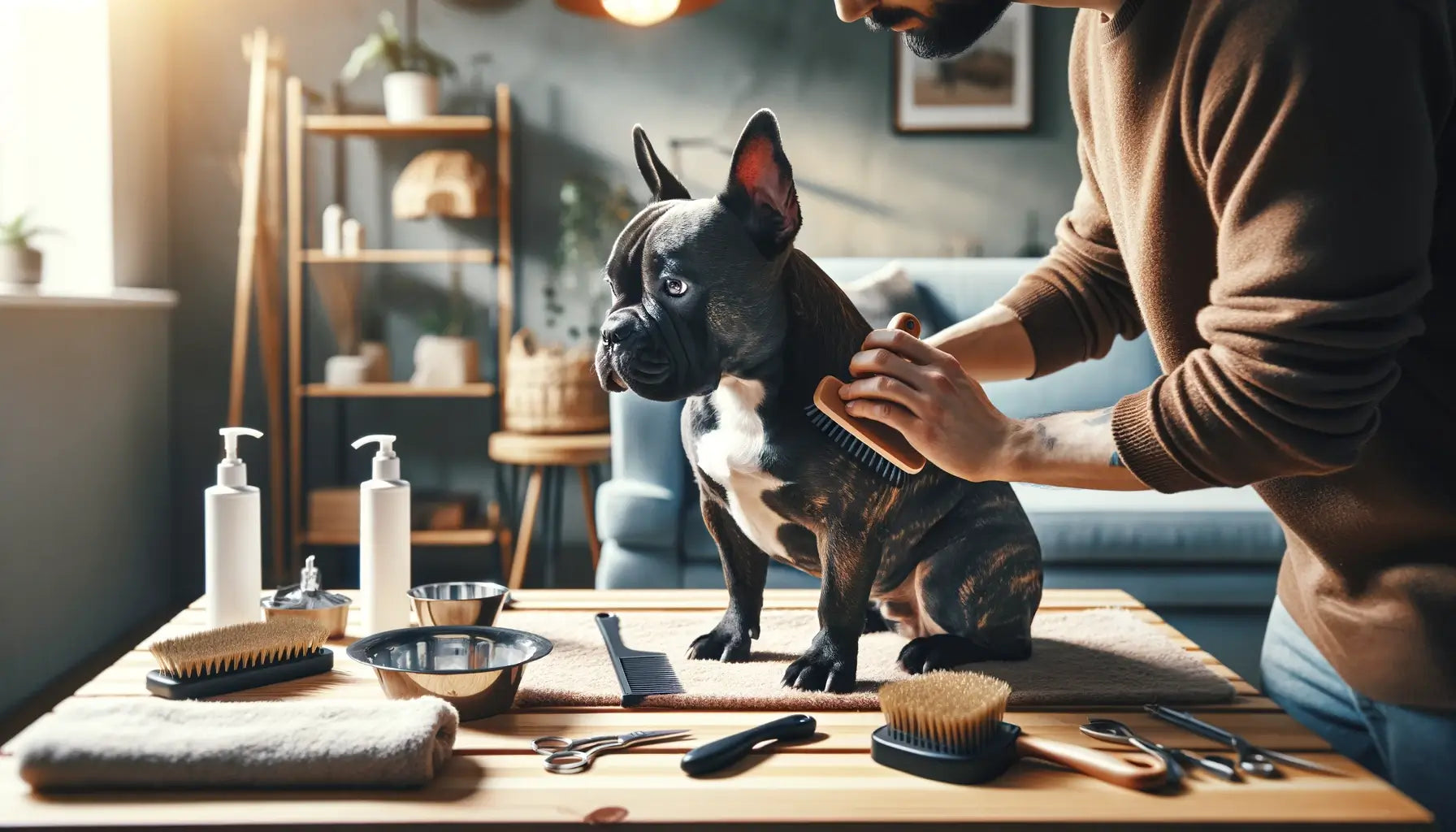
Grooming Essentials: Tailored Grooming and Care Routines for Pocket Bullies
Grooming your Pocket Bully isn't just about keeping them looking good; it's a vital part of their overall health care. These dogs may have short coats, but they still require a consistent grooming routine to keep their skin healthy, their coats shiny, and to reduce shedding. Moreover, regular grooming sessions become bonding experiences, strengthening the emotional connection between you and your pet.
Pocket Bullies are relatively low-maintenance compared to breeds with longer fur, but they still benefit from a regular grooming schedule. This includes brushing, baths, nail trimming, and dental care. Their muscular physique and active nature mean they can get dirty quickly, so knowing how to keep them clean and comfortable is essential for any Pocket Bully owner.
Key Aspects of Pocket Bully Grooming
Coat Care and Grooming Frequency
Their short coat makes Pocket Bullies easier to groom. A weekly brushing is usually sufficient to remove dead hair and distribute skin oils, keeping their coat healthy and shiny. Baths can be given as needed but generally should be limited to once a month to avoid drying out their skin.
Nutritional Needs and Diet Tips
Diet plays a crucial role in the health and appearance of your Pocket Bully's coat. A balanced diet rich in omega-3 fatty acids can help ensure a glossy, healthy coat and support overall health. Consult with a vet to determine the best diet plan for your dog, considering their age, weight, and activity level.
Daily Maintenance: Dental Care and Nail Trimming
Dental care is crucial for preventing dental diseases, which can affect their overall health. Regular brushing and dental chews can help maintain oral hygiene. Nail trimming should be done as needed to prevent discomfort and mobility issues. This is also a good time to check their ears for any signs of infection or irritation.
Schedule: Grooming and Feeding Timetable
| Daily Routine | Weekly Routine | Monthly Routine |
|---|---|---|
| Dental care (brushing or dental chews) | Nail trimming (if needed) | Bath with a gentle, dog-appropriate shampoo |
| Feeding (2-3 times based on age and size) | Ear check and cleaning (if needed) | Professional grooming session (if desired) |
| Short brushing session | Intensive coat brushing | Vet check-up (as recommended) |
Grooming Tips: Best Practices for a Healthy Coat
- Use the Right Tools: A rubber grooming mitt or a short-bristle brush is perfect for Pocket Bullies, efficiently removing loose fur and stimulating the skin.
- Mind the Baths: Use a mild, dog-specific shampoo to avoid stripping natural oils from their skin.
- Pay Attention to Diet: High-quality dog food that suits their age, size, and activity level can significantly impact their coat's health.
- Regular Check-ups: Incorporate grooming into a routine that includes checking for any unusual signs or changes in their skin, coat, ears, nails, and teeth.
By following these grooming and care tips, you can ensure your Pocket Bully not only looks great but feels great too. Regular grooming is an opportunity to check for any health issues that might not be immediately obvious, making it an essential part of your dog's health and happiness. 🐶✨
Pocket Bullies in Family Settings

Family Compatibility: Evaluating the Breed's Fit Within Diverse Family Environments
Pocket Bullies are not just pets; they're family members. Their incredible adaptability and loving nature make them perfect for a variety of family settings, from bustling households with kids and other pets to more serene environments. These dogs thrive on interaction and affection, making them ideal companions who add joy, loyalty, and a protective presence to your home.
The key to a successful integration of a Pocket Bully into your family lies in understanding their needs and ensuring they're met within the family dynamic. They're known for their patience with children and their friendly disposition towards other pets, making them an excellent choice for a family pet. However, like any breed, they require proper socialization, training, and attention to ensure they develop into well-behaved and happy family members.
Behavioral Aspects of Pocket Bullies in Families
Assessing Their Role as Family Pets
Pocket Bullies excel as family pets. Their strong build belies a gentle heart that's full of love for their family members. They are protective yet friendly, always eager to be part of family activities. Their loyalty and affectionate nature mean they often form strong bonds with all family members, providing comfort and companionship.
Interaction with Children and Other Animals
Their interaction with children is one of the Pocket Bully's standout qualities. They are known for their patience and gentleness, making them suitable for families with kids. Early socialization is key to fostering positive interactions with other pets in the household, ensuring they get along well with everyone, from cats to other dogs.
Family Rating Table: Compatibility Insights
| Family Aspect | Pocket Bully Compatibility |
|---|---|
| With Children | High – Known for gentleness and patience. |
| With Other Pets | High – Positive with proper socialization. |
| Activity Level Needed | Moderate – Requires regular exercise and mental stimulation. |
| Training & Socialization | Essential – Key to ensuring well-behaved family interactions. |
Social Tips: Smoothly Integrating a Pocket Bully into Your Home
- Start Early: Begin socialization and training as early as possible to build a foundation of good behavior and comfortable interactions.
- Family Involvement: Involve all family members in training and care routines to build strong bonds between the Pocket Bully and each member.
- Consistent Rules: Establish and maintain consistent rules and boundaries to help your Pocket Bully understand their role within the family.
- Regular Exercise: Ensure they receive adequate physical and mental exercise to keep them healthy and prevent boredom-related behaviors.
Integrating a Pocket Bully into your family offers a rewarding experience filled with love, laughter, and loyalty. Their adaptable nature and affectionate personalities make them an excellent addition to any home, enriching family life with their unique charm. By meeting their needs for socialization, exercise, and affection, you'll ensure your Pocket Bully becomes a cherished family member who brings joy and companionship for years to come. 🐾❤️
Differences Between Male and Female Pocket Bullies

Gender Comparison: Investigating the Nuances Between Male and Female Pocket Bullies
When it comes to choosing a Pocket Bully, understanding the differences between males and females can help you make a decision that best fits your lifestyle and family dynamics. While both genders share the breed's hallmark traits of loyalty, affection, and adaptability, there are subtle differences in their behavior, physicality, and health considerations. These distinctions, though not vast, can influence your experience as a Pocket Bully owner.
Male Pocket Bullies tend to be slightly larger and more muscular than their female counterparts, often displaying a more dominant demeanor. Females, on the other hand, might be a bit smaller and can sometimes exhibit more nurturing behaviors. Recognizing these tendencies is crucial for prospective owners to ensure a harmonious match with their new furry friend.
Differences in Behavior and Physicality
Behavioral Tendencies by Gender
Males are often described as more laid-back but can be more territorial and assertive in their interactions. They may require a firm, consistent hand in training to channel their energies positively. Females, while equally affectionate, tend to be more independent and can be easier to train, thanks to their focus and eagerness to please.
Physical Differences and Health Considerations
In terms of physicality, males generally boast a bulkier frame and might demand more exercise to manage their weight and muscle tone. Females, being slightly leaner, may require less rigorous physical activity but should still engage in regular exercise to maintain their health. Health considerations are similar for both genders, though females may have additional needs related to reproductive health if not spayed.
Comparison Table: Male vs. Female Traits
| Aspect | Male Pocket Bully | Female Pocket Bully |
|---|---|---|
| Size & Build | Larger and more muscular | Slightly smaller and less bulky |
| Behavioral Traits | Laid-back, territorial, assertive | Independent, nurturing, focused |
| Training | May require firm, consistent training | Generally easier to train |
| Exercise Needs | High, to manage weight and muscle tone | Moderate, to maintain health |
| Health Concerns | Similar across genders | Additional reproductive health considerations if not spayed |
Selection Guide: Making the Choice That Suits Your Family Best
Choosing between a male and female Pocket Bully comes down to personal preference and compatibility with your lifestyle. Consider your family's dynamics, your ability to meet exercise needs, and your experience with dogs. Regardless of gender, early socialization, proper training, and regular veterinary care are paramount to raising a healthy, well-adjusted Pocket Bully.
Both male and female Pocket Bullies make extraordinary companions, each bringing their unique blend of traits and personality to the family. By understanding these nuances, you can better prepare for your new addition, ensuring a perfect match that enriches your life with joy, loyalty, and unconditional love. 🐾💕
Choosing a Pocket Bully Puppy: A Buyer's Guide

Buying Guide: Navigating the Process of Selecting a Pocket Bully Puppy Ethically and Wisely
Embarking on the journey to bring a Pocket Bully puppy into your home is an exciting venture, filled with anticipation and joy. However, it's crucial to approach this process with care, diligence, and a commitment to ethical practices. Selecting a Pocket Bully puppy involves more than falling in love with a pair of soulful eyes; it's about ensuring the health, well-being, and ethical breeding of your future companion.
Identifying reputable breeders, understanding health checks, and knowing the right questions to ask are all integral steps in making an informed, responsible decision. By following a buyer's guide, you can ensure that your Pocket Bully puppy is not only a joyful addition to your family but also a testament to responsible dog ownership.
Checklist for Choosing a Pocket Bully Puppy
Identifying Reputable Breeders
Reputable breeders are the cornerstone of responsible puppy selection. They prioritize the health, temperament, and well-being of their dogs, ensuring that puppies are raised in a loving, clean, and stimulating environment. Look for breeders who:
- Provide comprehensive health screening results for the puppy and its parents.
- Welcome visits to their breeding facility.
- Demonstrate a deep knowledge of the breed and a commitment to its welfare.
Recognizing Red Flags in Breeding Practices
Awareness of red flags is crucial in avoiding unethical breeders. Be wary of breeders who:
- Refuse to allow visits to their breeding facility.
- Offer puppies at significantly lower prices than those of reputable breeders.
- Cannot provide health clearances or documentation for the puppy and its parents.
Essential Health Checks and Documentation
A healthy puppy starts with thorough health checks and proper documentation. Ensure your breeder provides:
- Proof of vaccinations and deworming.
- Health clearances for common genetic conditions in the breed.
- A health guarantee and return policy.
Breeder Criteria Table: What to Look for in a Breeder
| Criteria | Description |
|---|---|
| Health Screenings | Provides clear health screenings for genetic conditions and vaccinations. |
| Facility Visitation | Allows potential buyers to visit and inspect the breeding facility. |
| Breed Knowledge | Demonstrates extensive knowledge about Pocket Bullies and their care. |
| After-Sale Support | Offers guidance and support for the puppy's transition to its new home. |
| Ethical Practices | Follows ethical breeding practices, prioritizing animal welfare. |
Purchase Tips: Key Questions and Documents
When meeting with breeders, come prepared with questions about the puppy's upbringing, health, and temperament. Ask to see the parents of the puppy, if possible, to gauge future characteristics. Ensure all agreements, health records, and sale conditions are provided in writing to protect both you and the puppy.
Choosing a Pocket Bully puppy is a significant commitment that should be approached with care and responsibility. By prioritizing ethical practices, health, and compatibility with your lifestyle, you can ensure that your new furry friend will bring joy, companionship, and love to your family for years to come. 🐶💖
Pocket Bully: Unique Traits and Special Features

Distinctive Traits: Highlighting What Sets Pocket Bullies Apart from Other Breeds
Pocket Bullies, with their charismatic presence and robust physique, stand out in the canine world. This breed is not just another pretty face; they embody a combination of strength, intelligence, and a remarkably sweet temperament. What truly sets Pocket Bullies apart is their unique blend of physical and personality traits, making them not just pets, but loyal and loving members of the family.
Their compact size, muscular build, and friendly disposition make them adaptable to a variety of living conditions, from spacious homes with yards to cozy city apartments. Beyond their adaptability, Pocket Bullies are known for their incredible intelligence and trainability, offering endless possibilities for bonding through training and play.
Features of Pocket Bullies
Breed-Specific Characteristics
Pocket Bullies are distinguished by their muscular build, broad chest, and blocky head, which give them a distinctive, powerful appearance. Despite their formidable look, they possess a gentle and affectionate nature, craving human interaction and companionship. Their coat comes in various colors and patterns, requiring minimal grooming, which adds to their appeal for owners looking for a low-maintenance yet striking pet.
Comparisons with Standard American Bullies
While they share the same lineage, Pocket Bullies are notably smaller than their Standard American Bully counterparts. This size difference allows Pocket Bullies to fit more easily into different lifestyles and environments, making them particularly appealing to those with limited space. Despite their smaller stature, they maintain the same level of loyalty, affection, and protectiveness as the larger Bully breeds.
Unique Abilities and Talents
Pocket Bullies possess a surprising array of talents and abilities. Their intelligence and eagerness to please make them excellent candidates for various canine sports and activities, including agility, obedience, and even therapy work. Their adaptability and social nature also make them fantastic companions for outdoor adventures, family activities, and social gatherings.
Trait Table: Special Features Overview
| Feature | Description |
|---|---|
| Size | Compact and muscular, ideal for various living situations. |
| Temperament | Affectionate, loyal, and adaptable. |
| Intelligence | High, with a great capacity for learning and obedience. |
| Physical Appearance | Distinctive muscular build with a variety of coat colors and patterns. |
| Maintenance | Low grooming needs, despite a robust appearance. |
Fun Facts: Engaging Trivia for Enthusiasts
- Pocket Bullies have a surprisingly high tolerance for dress-up and often become stars of pet-centric social media accounts.
- Despite their tough appearance, many Pocket Bullies have a soft spot for cuddles and can often be found lounging in laps, regardless of their size.
- Their social nature makes them excellent "greeters" and they often take on the role of welcoming committee in homes with frequent guests.
Pocket Bullies are more than just dogs; they are a testament to the beauty of the canine spirit, embodying strength, intelligence, and an unparalleled capacity for love. Their unique traits and special features not only make them stand out from the crowd but also make them treasured members of their families, bringing joy, companionship, and a touch of adventure to everyday life. 🌟🐾
Weighing the Pros and Cons of Pocket Bully Ownership

Balanced Overview: Discussing the Joys and Challenges of Owning a Pocket Bully
Deciding to bring a Pocket Bully into your life is a significant commitment that comes with both immense rewards and certain challenges. These charismatic canines can bring unparalleled joy to your household, but it's essential to consider all aspects of their care, temperament, and the lifestyle adjustments they necessitate. Understanding the pros and cons of Pocket Bully ownership can help you make an informed decision, ensuring that both you and your new furry friend are set up for a happy, fulfilling life together.
Key Aspects of Pocket Bully Ownership
Benefits of Companionship
Pocket Bullies offer unwavering loyalty, affection, and companionship. Their sociable nature makes them fantastic family pets, bonding deeply with their owners. They're playful, loving, and often serve as a source of comfort and emotional support. Their intelligence and eagerness to please also make them a joy to train and engage with on a daily basis.
Considerations for Grooming and Health Care
While Pocket Bullies are relatively low maintenance in terms of grooming, they do require consistent care to maintain their health and well-being. Prospective owners should be prepared for regular veterinary check-ups, a commitment to maintaining a healthy diet and exercise regimen, and attentiveness to any breed-specific health concerns.
Commitment in Terms of Time and Finances
Owning a Pocket Bully, like any pet, is a financial and time commitment. From high-quality food to health care, training, and potential grooming needs, there are ongoing costs to consider. Additionally, Pocket Bullies thrive on attention and interaction, requiring time for exercise, play, and companionship.
Pros & Cons Table: Balanced Insights
| Pros | Cons |
|---|---|
| Unwavering Loyalty and Companionship | Financial and Time Commitment |
| Intelligence and Trainability | Potential for Specific Health Issues |
| Adaptability to Various Lifestyles | Need for Regular Exercise and Mental Stimulation |
| Low Grooming Needs | Socialization and Training Requirements |
Consideration Tips: What Prospective Owners Should Think About
- Lifestyle Compatibility: Assess whether your lifestyle can accommodate the exercise, training, and companionship needs of a Pocket Bully.
- Long-Term Commitment: Consider whether you're ready for the long-term financial and time commitments required for responsible pet ownership.
- Breed-Specific Needs: Research and prepare for any breed-specific health issues or care requirements to ensure you can provide the best care for your Pocket Bully.
Owning a Pocket Bully can be one of the most rewarding experiences, offering the joy of a deep bond with a loyal, loving companion. However, it's essential to enter into this relationship with eyes wide open, ready to meet the challenges along with embracing the joys. By carefully considering these factors, you can ensure a happy, healthy life for your Pocket Bully and a fulfilling, enriching experience for yourself. 🐾💖
Cost Analysis: Owning a Pocket Bully

Financial Overview: Breaking Down the Costs Associated with Pocket Bully Ownership
Owning a Pocket Bully, like any pet, involves a variety of costs that go beyond the initial purchase price. Understanding these expenses is crucial for prospective owners to ensure they're fully prepared for the financial commitment. From routine care to unexpected health issues, a comprehensive budget will help you navigate the responsibilities of ownership while ensuring your Pocket Bully enjoys a happy, healthy life.
Expense Details
Initial Purchase Price and Breeder Considerations
The cost of a Pocket Bully puppy can vary widely depending on the breeder's reputation, the puppy's lineage, and location. Prices can range significantly, so it's important to budget accordingly and choose a reputable breeder who prioritizes the health and well-being of their dogs over making a quick sale.
Ongoing Expenses: Food, Grooming, Vet Care
Routine expenses include high-quality food, grooming supplies, and regular veterinary care. Investing in a nutritious diet and preventive health care can help avoid more significant expenses down the line. Additionally, setting aside funds for routine check-ups, vaccinations, and flea/tick prevention is essential.
Additional Costs: Training, Emergency Care
Training classes are highly recommended to ensure your Pocket Bully is well-behaved and socialized. Budgeting for potential emergency veterinary care is also wise, as unexpected health issues can arise, leading to significant expenses.
Budget Table: Monthly and Annual Expense Guide
| Expense Category | Estimated Monthly Cost | Estimated Annual Cost |
|---|---|---|
| Food | $40 - $80 | $480 - $960 |
| Grooming | $0 - $50 | $0 - $600 |
| Routine Vet Care | $20 - $40 | $240 - $480 |
| Training | $50 - $100 | $600 - $1200 |
| Emergency Vet Savings | $20 - $50 | $240 - $600 |
Note: These costs are estimates and can vary based on location, the specific needs of your Pocket Bully, and the level of care you choose to provide.
Saving Tips: Managing Costs Without Compromising Care
- Quality Diet: Investing in high-quality food can reduce health issues and vet bills in the long run.
- Preventive Care: Regular vet check-ups and preventive treatments can avoid costly health emergencies.
- Training: Consider group classes or online resources for more affordable training options.
- Insurance: Pet insurance can help manage unexpected health expenses, offering peace of mind.
Owning a Pocket Bully is a rewarding experience that comes with its set of financial responsibilities. By planning ahead and budgeting for both routine and unexpected expenses, you can ensure your Pocket Bully lives a long, happy, and healthy life by your side. 🐾💰
The Enduring Appeal of Pocket Bullies

Closing Thoughts: Summarizing the Enduring Appeal and the Unique Joy of Owning a Pocket Bully
Pocket Bullies have captivated the hearts of dog lovers worldwide, offering an unbeatable combination of loyalty, affection, and adaptability. Their enduring appeal lies not just in their striking appearance but in their incredible personalities, making them perfect companions for a wide range of individuals and families. From their robust, muscular build to their surprisingly gentle and loving nature, Pocket Bullies embody the best qualities of the canine world.
These remarkable dogs bring joy, companionship, and a sense of security to their owners' lives, proving themselves to be much more than just pets. They're loyal friends, playful companions, and devoted family members. The unique joy of owning a Pocket Bully comes from the deep bond they form with their owners, a testament to their affectionate and personable nature.
Reflection Points: Recap of Their Suitability as Loyal Companions
- Adaptability: Pocket Bullies adjust well to various living environments, making them suitable for both apartments and houses with yards.
- Personality: Their friendly, loyal, and affectionate demeanor makes them excellent companions for families, singles, and seniors alike.
- Trainability: High intelligence and eagerness to please make them responsive to training, enhancing their compatibility with their owners.
Summary Table: Recap of Key Points
| Aspect | Detail |
|---|---|
| Size & Build | Compact, muscular, ideal for various living situations |
| Temperament | Affectionate, loyal, adaptable |
| Compatibility | Excellent with children and other pets |
| Care Requirements | Moderate; includes regular exercise, training, and preventive health care |
| Financial Commitment | Requires budgeting for initial costs, ongoing care, and potential emergencies |
Final Recommendations: Advice for Those Considering a Pocket Bully
For those contemplating adding a Pocket Bully to their lives, consider not only the joy and companionship they offer but also the commitment required to ensure their well-being. They're more than just a pet; they're a lifelong friend who will share in your joys, comfort you in your sorrows, and enrich your life in countless ways.
Before making the decision, ensure you're prepared for the financial, time, and emotional investment needed to provide a loving, stable home for a Pocket Bully. If you're ready for the commitment, a Pocket Bully can be an incredible addition to your family, offering unconditional love and loyalty for years to come.
Pocket Bullies stand out as not only symbols of strength and resilience but as loving, intelligent companions eager to find their place in your home and heart. 🐾❤️
FAQs: Everything You Need to Know About Pocket Bullies
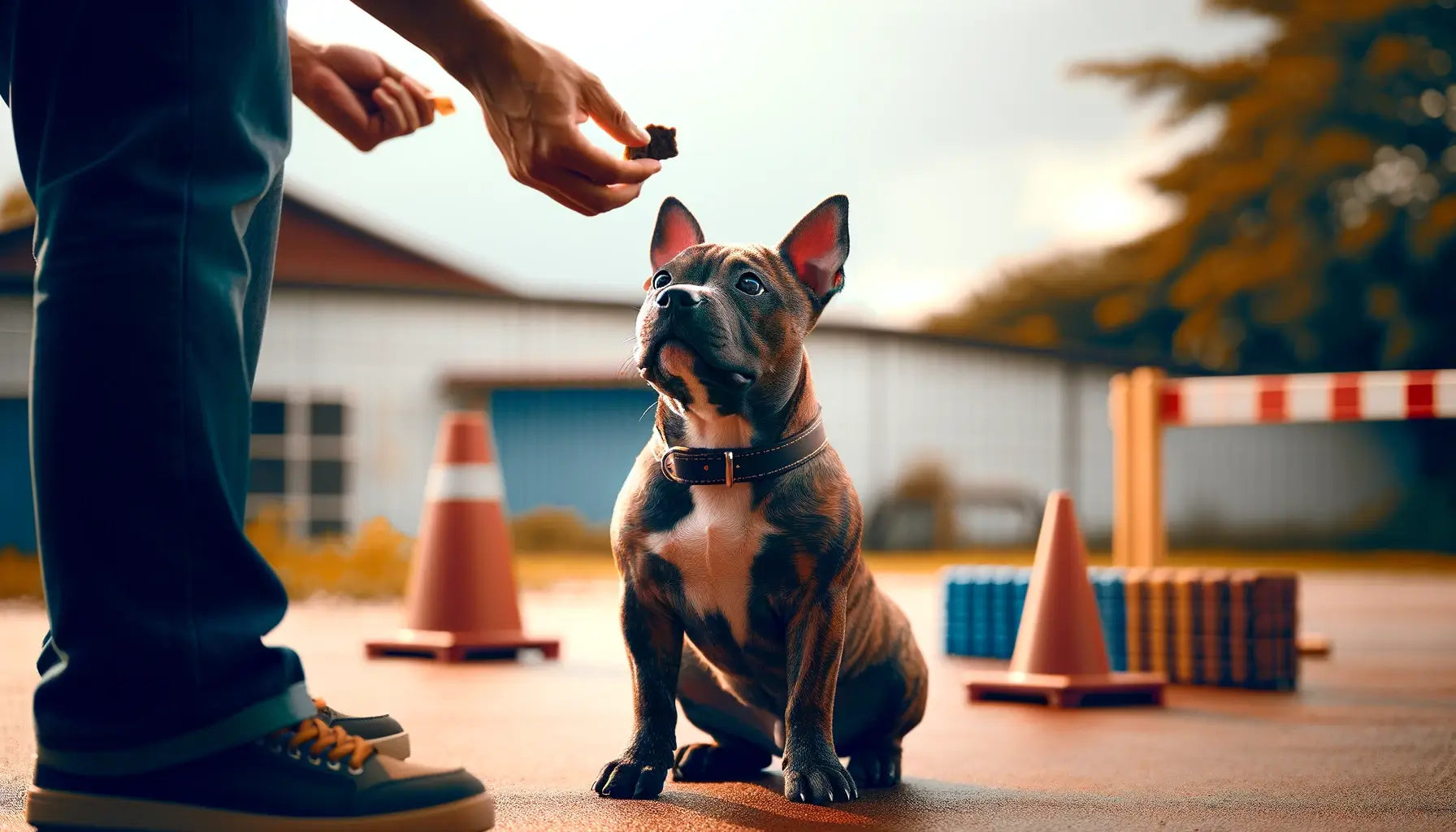
1. What Defines a Pocket Bully's Size and Build?
A Pocket Bully is defined by its compact, muscular build, standing 14-17 inches at the shoulder. Despite their smaller stature, they maintain a robust physique characteristic of the Bully breeds.
2. How Long Do Pocket Bullies Typically Live?
Pocket Bullies have a lifespan of 10-12 years, with proper care, including regular veterinary check-ups, a balanced diet, and adequate exercise.
3. Are Pocket Bullies Good Family Pets?
Yes, Pocket Bullies are excellent family pets. They are known for their affectionate nature, loyalty, and patience with children, making them a great addition to any home.
4. What Kind of Exercise Requirements Do Pocket Bullies Have?
Pocket Bullies require moderate exercise, including at least 30-60 minutes of physical activity daily, to maintain their health and happiness.
5. Can Pocket Bullies Adapt to Apartment Living?
Yes, Pocket Bullies can adapt well to apartment living, provided they receive enough exercise and mental stimulation to keep them active and engaged.
6. What Are Common Health Issues in Pocket Bullies?
Common health issues in Pocket Bullies include hip dysplasia, allergies, and heart conditions. Regular veterinary care is essential to manage and prevent these issues.
7. Do Pocket Bullies Require Special Grooming Care?
Pocket Bullies have minimal grooming needs due to their short coat. Regular brushing and occasional baths are sufficient to keep their coat healthy.
8. How Are Pocket Bullies With Other Pets?
With proper socialization, Pocket Bullies can get along well with other pets. They are generally friendly and can coexist peacefully with both dogs and cats.
9. What Makes Pocket Bullies Different From Other Bully Breeds?
Pocket Bullies are distinguished from other Bully breeds by their compact size, while still retaining the muscular build, strength, and temperament of the larger Bully variants.
10. Is Training a Pocket Bully Difficult?
No, training a Pocket Bully is not difficult. They are intelligent and eager to please, responding well to positive reinforcement and consistent training methods.
11. What Is the Ideal Diet for a Pocket Bully?
The ideal diet for a Pocket Bully includes high-quality dog food rich in protein and balanced in fats and carbohydrates, tailored to their age, size, and activity level.
12. How Social Are Pocket Bullies?
Pocket Bullies are highly social dogs that thrive on human interaction and enjoy being part of family activities. They are affectionate and enjoy companionship.
13. What Activities Do Pocket Bullies Enjoy?
Pocket Bullies enjoy a variety of activities, including walking, playing fetch, agility training, and participating in interactive games that challenge their minds and bodies.
14. Can Pocket Bullies Handle Cold Weather?
Pocket Bullies can handle moderate cold weather, but due to their short coats, they should not be exposed to extreme cold for prolonged periods. Protective clothing and indoor warmth are recommended in colder climates.
15. Are Pocket Bullies Prone to Obesity?
Like many breeds, Pocket Bullies can be prone to obesity without proper diet and exercise. It's important to monitor their food intake and ensure they receive regular physical activity.






